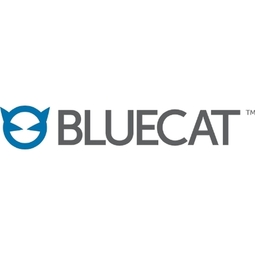Customer Company Size
Large Corporate
Region
- Europe
Country
- Norway
Product
- BlueCat DNS/DHCP Server
Tech Stack
- DNS/DHCP
- NTP (Network Time Protocol)
- PXE (Pre-Boot Execution Environment)
Implementation Scale
- Enterprise-wide Deployment
Impact Metrics
- Productivity Improvements
- Cost Savings
Technology Category
- Networks & Connectivity - Network Management & Analysis Software
Applicable Industries
- Cities & Municipalities
Applicable Functions
- Business Operation
Services
- System Integration
- Testing & Certification
About The Customer
Alesund kommune is a Norwegian municipality with a population of 42,982. The municipality occupies seven of the outer islands in the county of Møre og Romsdal: Heissa, Aspøya, Nørvøya, Oksnøya, Ellingsøya, Humla, and Tørla. Alesund town centre is located on the islands of Aspøya and Nørvøy, and further residential areas are located on the islands of Heissa and Oksnøya. The municipality has approximately 3,000 nodes in the network, spread over about 200 different subnets. In addition to its 2,500 employees, Alesund also provides nodes for several thousand students in the lower grade schools.
The Challenge
Alesund kommune, a Norwegian municipality with a population of 42,982, was using a combination of Windows 2000 server, Linux and BIND to manage its DNS and DHCP. However, the lack of redundancy for DHCP made it impossible to ensure the robustness of the network. The municipality occupies seven of the outer islands in the county of Møre og Romsdal, making it a highly-dispersed environment. Alesund wanted to find a DNS/DHCP solution that would not only eliminate potential network downtime, but would also simplify network management and improve administrator and user productivity while simultaneously decreasing the associated costs of managing its distributed network. The municipality has approximately 3,000 nodes in the network, spread over about 200 different subnets, with most of the clients being Windows and PXE (Pre-Boot Execution Environment) thin clients. With Windows 2000 server, it was impossible to divide all the nodes up into different classes within subnets, which made the system extremely difficult to monitor and manage.
The Solution
Alesund selected BlueCat DNS/DHP Server after researching many different DNS/DHCP solutions and attending several exhibits, such as Interop. The technology was selected primarily because it provided the most user-friendly management system, and because it allowed for DNS, DHCP, and NTP (Network Time Protocol) to be in one box in high availability mode. Before installing BlueCat DNS/DHCP Server, Alesund undertook a thorough testing program with as many as 50 nodes involved in the testing. The technology proved extremely stable and easy to install and manage. With the pilot successfully completed, Alesund began the installation of the DNS/DHCP technology. DHCP and NTP were the easiest to install and BlueCat provided help all the way, including the last part; installing the DNS service.
Operational Impact

Case Study missing?
Start adding your own!
Register with your work email and create a new case study profile for your business.
Related Case Studies.

Case Study
Turning A Stadium Into A Smart Building
Honeywell created what it called the “intelligent system” for the National Stadium in Beijing, China, turning the venue for the opening and closing events at the 2008 Summer Olympics into a “smart building.” Designed by highly controversial artist Ai Weiwei, the “Bird’s Nest” remains one of the most impressive feats of stadium architecture in the world. The 250,000 square meter structure housed more than 100,000 athletes and spectators at a time. To accommodate such capacity, China turned to Honeywell’s EBI Integrated Building Management System to create an integrated “intelligent system” for improved building security, safety and energy efficiency.
.png)
Case Study
Smart Street Light Network (Copenhagen)
Key stakeholders are taking a comprehensive approach to rethinking smart city innovation. City leaders have collaborated through partnerships involving government, research institutions and solution providers. The Copenhagen Solutions Lab is one of the leading organizations at the forefront of this movement. By bringing together manufacturers with municipal buyers, the Copenhagen Solutions Lab has catalyzed the development and deployment of next-generation smart city innovations. Copenhagen is leveraging this unique approach to accelerate the implementation of smart city solutions. One of the primary focus areas is LED street lighting.

Case Study
Buoy Status Monitoring with LoRa
The Netherlands are well-known for their inland waterways, canals, sluices and of course port activities. The Dutch Ministry of Infrastructure indicates that there are thousands of buoys and fixed items in and near water environments that would profit from IoT monitoring. One of the problems with buoys for example, is that they get hit by ships and the anchor cable breaks. Without connectivity, it takes quite some time to find out that something has happened with that buoy. Not to mention the costs of renting a boat to go to the buoy to fix it. Another important issue, is that there is no real-time monitoring of the buoys at this moment. Only by physically visiting the object on the water, one gains insight in its status.

Case Study
China Mobile Smart Parking
Smart Parking, powered by NB-IoT technology, is making it easier for drivers to find free parking spots. Cities can better manage their parking assets and maximize the revenue available to them as a result. Drivers searching for parking create congestion and pollution by circling and hunting for available parking. Smart Parking services are able to significantly ease these problems by guiding a driver directly to a parking space.

Case Study
Barcelona Case Study
Barcelona’s heavy traffic and its associated high levels of pollution were the primary factors that motivated some companies and universities to work on strategies for improving traffic in the city centre. Bitcarrier is one of the technologies involved in the In4Mo Project, whose main objective is to develop the applications that form the core of smart mobility, one of the fundamental pillars of the smart city concept.




